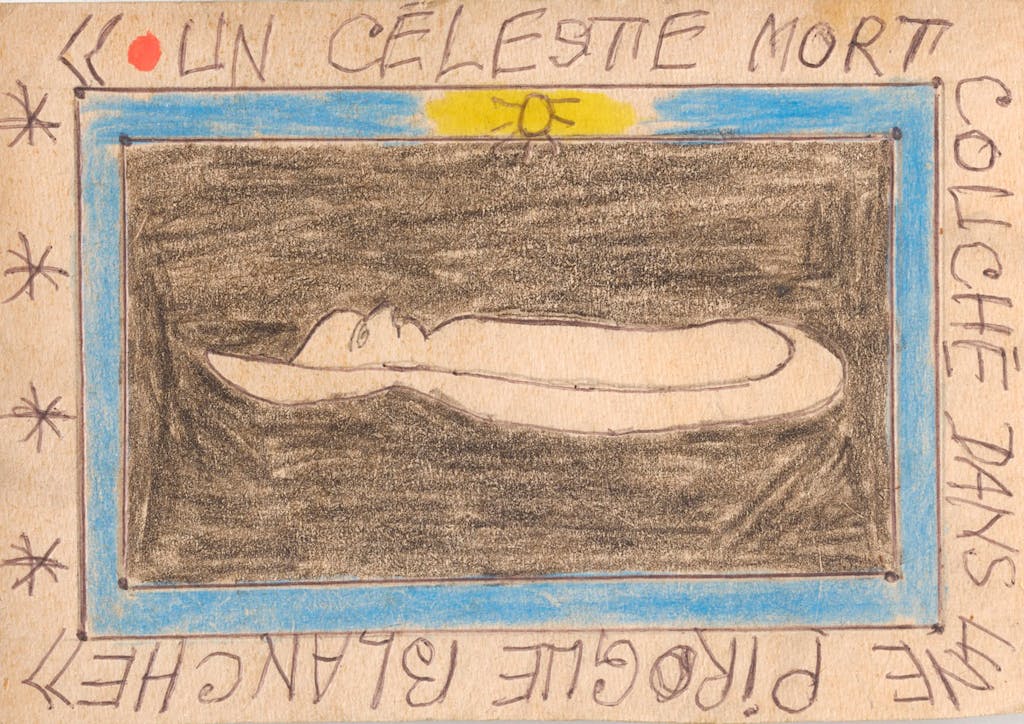Frédéric Bruly Bouabré

Frédéric Bruly Bouabré (1923–2014) was an Ivorian poet and visual artist. His distinctive body of work was influenced by a ‘divine intervention’ he experienced in March 1948, as described in his own words: ‘the heavens opened up before my eyes and seven colourful suns described a circle of beauty around their Mother-Sun, I became Cheik Nadro: “He who does not forget”.’ From then on Bouabré started to collect a vast amount of knowledge, researching various fields such as science, literature, religion and philosophy and recording his thoughts in notebooks.
Institutional exhibitions
World Unbound, MoMA, The Museum of Modern Art, New York, USA
2022
Art/Afrique, le nouvel atelier, Fondation Louis Vuitton, Paris, France (group show)
2017
Chinese Utopias Revisited: The Elephants, Bozar, Brussels, Belgium (group show)
2015
Post-Picasso: Contemporary Reactions, Museu Picasso, Barcelona, Spain (group show)
2014
Tate Modern, London, England
2010
Collection de l’Art Brut, Lausanne, Switzerland
2010
La Haute Diplomatie, Ikon Gallery, Birmingham, England
2007
Musée des Civilisations de Côtes d’Ivoire, Abidjan, Ivory Coast
2006
World Envisionned: Frédéric Bruly Bouabré & Alighiero e Boetti, Dia Center for the Arts, New York, NY, United States
1994
Haus der Kulturen der Welt, Berlin, Germany, travelling to Ludwig Museum, Aachen, German
1993
Magiciens de la Terre, Centre Pompidou and Grande Halle de la Villette, Paris, France (group show)
1989
Works
Frédéric Bruly Bouabré
coloured pencil and ball point on cardboard
15 x 10 cm, framed 23 x 19 cm